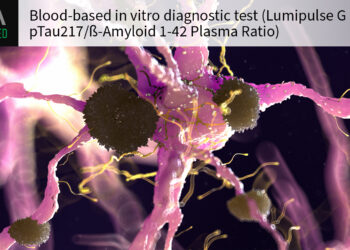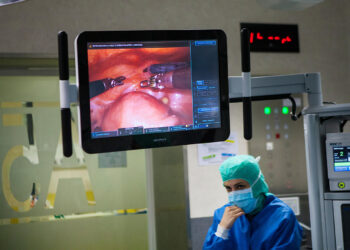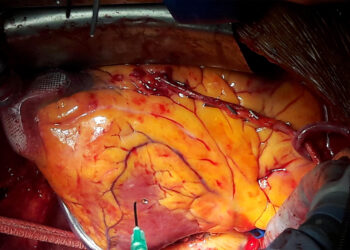
- “Broken heart syndrome” carries a significant risk of death and serious complications, according to new research.
- Although the condition appears to be much more common in females, males may be significantly more likely to die from it.
- “Broken heart syndrome” is commonly associated with other major complications, including heart failure, atrial fibrillation, stroke, and cardiogenic shock.
Men may be more than twice as likely as women to die from takotsubo cardiomyopathy, colloquially known as “broken heart syndrome,” a new study suggests.
Although takotsubo cardiomyopathy (TC) seems to predominantly affect females, accounting for approximately 80% of cases in the study, males who develop the condition appear to have worse outcomes. The reasons for these sex-based differences in TC, which is a relatively uncommon diagnosis, remain unclear.
Researchers also observed that over the five-year period of investigation, mortality rates associated with TC did not improve, despite advancements in care.
“We were surprised to find that the death rate from Takotsubo cardiomyopathy was relatively high without significant changes over the five-year study, and the rate of in-hospital complications also was elevated,” said study author Mohammad Reza Movahed, MD, PhD, an interventional cardiologist and clinical professor of medicine at the University of Arizona’s Sarver Heart Center in Tucson, Arizona, in a press release.
“The continued high death rate is alarming, suggesting that more research be done for better treatment and finding new therapeutic approaches to this condition,” Movahed continued.
TC is a temporary heart condition that can be caused by a surge in stress hormones, often linked to intense emotional or physical experiences, such as the loss of a loved one or a car accident. This leads to the weakening and enlargement of part of the heart, which restricts its ability to pump blood effectively.
“It’s definitely hypothesis generating,” said Abha Khandelwal, MD, a cardiologist and associate professor of medicine at Stanford Medicine who was not affiliated with the study.
However, she continued, “We still have a lot to learn about which patients are really going to present with the malignant form of this condition.”
Researchers used the Nationwide Inpatient Sample (NIS), a public database of de-identified hospitalization data, to identify cases of TC between 2016 and 2020.
The study identified nearly 200,000 cases during this period, with women comprising the vast majority (83%) of patients—a finding consistent with existing data about the condition.
The average age of patients admitted with TC was 67. Demographic patterns emerged in the data, as 80% of cases were diagnosed in white patients, suggesting potential racial differences in prevalence or diagnosis rates.
Although men made up a much smaller portion of those admitted for TC, they had more than double the likelihood of dying, 11.2% compared to 5.5% for women.
The study could not determine the reasons for this mortality gap, as the retrospective observational design limits researchers to identifying associations rather than establishing causation.
However, Khandelwal suggests that the stereotype of TC being a “woman’s disease” may play a role in the worse outcomes seen in men.
“When a disease presents the way we expect it to, people do fine, but it’s really the outliers that tend to have worse outcomes. In the old days, coronary artery disease was considered a man’s disease. So, when women came into the hospital with heart attacks, they had worse outcomes. So, this is like a reverse of that,” she said.
Other cardiovascular comorbidities are common among patients presenting with TC, as observed in the study. The most frequently reported cardiovascular complications included:
The overall mortality rate among patients with TC was significantly higher (6.58%) than other patients (2.41%), making them nearly three times more likely to die.
Still, the study’s design and the presence of multiple serious comorbidities make it difficult to draw firm conclusions about the persistently elevated mortality rate in TC, according to Khandelwal.
“It doesn’t tell you about the clinical characteristics of the people with the disease.These patients were critically ill, and there may be other comorbidities that were influencing their mortality. So, it’s very hard to know what drove it,” she said.
In fact, the authors themselves even acknowledge that the prevalence of TC observed during the study could be attributable to greater awareness of the condition among doctors who might have otherwise recorded it as some other form of acute coronary syndrome.
Much remains unknown about TC, including its precise cause, but it has earned the nickname “broken heart syndrome” for good reason.
The condition can be triggered by sudden loss, emotional trauma, or even an acute scare.
Khandelwal has seen the condition multiple times in her career, including a case in which a grandmother developed TC after being startled by her young grandchild.
Each year, TC accounts for approximately 2–3% of patients presenting with acute coronary syndrome, and that rate doubles to
TC is generally indistinguishable from a heart attack at the time of presentation. Common symptoms include:
To diagnose TC, physicians must first rule out coronary artery blockages — typically using an angiogram — and then use additional imaging, such as an echocardiogram, to detect abnormalities in the heart’s left ventricle.
While often triggered by emotional distress like grief following the loss of a loved one, takotsubo cardiomyopathy can also develop after physical traumas such as car accidents or major surgery — earning it the additional designation “stress-induced cardiomyopathy.”
Researchers have yet to fully understand its underlying mechanisms. Notably, TC sometimes occurs without any identifiable trigger, further complicating efforts to pinpoint its precise causes.
The uncommon nature of the condition along with its unpredictability make it difficult to prevent.
“We still can’t predict who is going to get it, and under what circumstances. Is there a stress threshold? We really don’t know. And of those who get it, we also don’t know which ones are going to get a more malignant form,” said Khandelwal.
Source link : https://www.healthline.com/health-news/men-more-likely-to-die-of-broken-heart-syndrome
Author :
Publish date : 2025-05-16 13:20:58
Copyright for syndicated content belongs to the linked Source.














